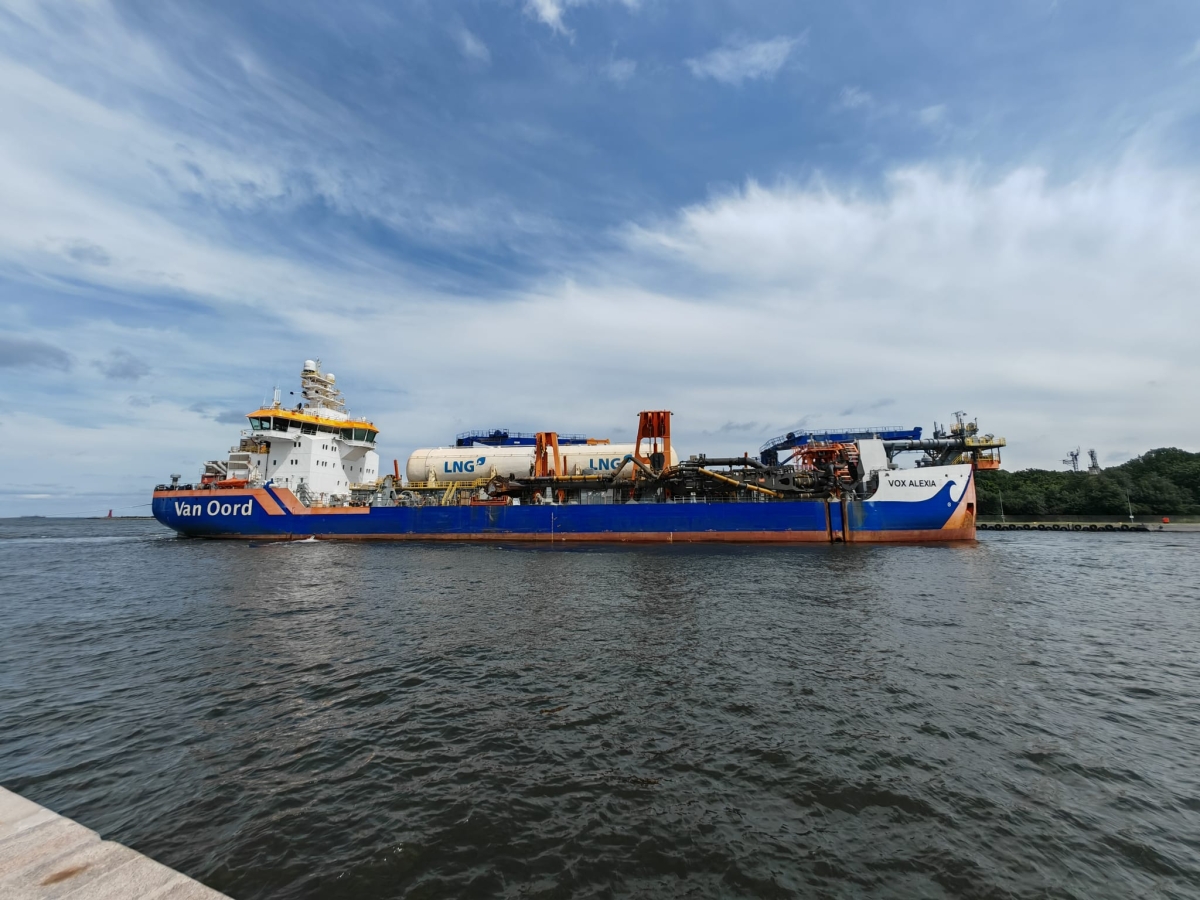
At the planned location of Poland’s first floating LNG terminal, GAZ-SYSTEM has commenced dredging the bottom of the Gulf of Gdańsk. This is one of the key stages preceding the construction of quay infrastructure. The works will cover nearly 656,000 m² of the water area.
The activities were preceded by clearing the seabed of ferromagnetic objects. Then, dredging works began, divided into four stages. The first stage involves deepening the section of the seabed where the future terminal quay will be built. In the next phase, work will continue in the immediate vicinity of the planned infrastructure, up to the protective breakwater being constructed by the Maritime Office in Gdynia. The last two stages will cover the southern and eastern parts of the marine construction site.
A Very Important Preparation Stage
“The start of preparatory work at sea is another important step in implementing the FSRU Program. Deepening the seabed in the area of the future terminal is not only a condition for the safe maneuvering and mooring of vessels with large drafts but also the foundation for the efficient operation of the entire infrastructure. At GAZ-SYSTEM, we are consistently developing a gas pipeline network that increases the capacity for gas imports by sea and effectively strengthens Poland’s energy security,” said Sławomir Hinc, President of the Management Board of GAZ-SYSTEM.
Once the dredging works are completed, mobilization of floating units, equipment, and materials necessary for carrying out pile-driving works will begin. These works must be conducted taking into account weather conditions and the so-called environmentally sensitive period — a time of year when nature in this area is particularly vulnerable to disturbances, e.g., due to fish spawning. These stages of work will last until next year.
Some of the material excavated during the dredging of the Gulf of Gdańsk seabed will be used to replenish the beach at Górki Zachodnie (near entrance no. 21). The rest will be deposited in a special dumping area designated by the Maritime Office in Gdynia.
FSRU Terminal — A New Gas Entry Point to Poland
The floating LNG terminal (FSRU – Floating Storage & Regasification Unit) is a strategic investment aligned with the development of gas infrastructure in Poland and the region. It involves the construction of infrastructure capable of receiving, processing storage, and regasifying over 6 billion cubic meters of gas per year. The regasification unit, currently being built at Hyundai Heavy Industries shipyard in South Korea, will be permanently moored in the southern part of the Gulf of Gdańsk, near the Port of Gdańsk (in the vicinity of Baltic Hub and the approach channel). This infrastructure will be the second facility in Poland (after the LNG terminal in Świnoujście) enabling the reception of liquefied gas delivered by sea.
The FSRU Program includes not only the construction of the quay and the marine gas pipeline but also the expansion of the national transmission system with nearly 250 km of new onshore gas pipelines. The new terminal is planned to be commissioned between 2027 and 2028.
Financial Support for the Investment
The marine part of the investment is carried out with the use of European Union funds. The European Commission, under the Connecting Europe Facility (CEF), granted the LNG Gdańsk project funding for preparatory works. The maximum amount of support is approximately €19.6 million.
In June 2025, GAZ-SYSTEM signed a loan agreement with the National Development Bank (Bank Gospodarstwa Krajowego) for PLN 2.2 billion, which will be allocated to the construction of natural gas infrastructure. The financing comes from the National Recovery and Resilience Plan (KPO), under which the FSRU Program is included in the REPowerEU part — an EU instrument supporting the rapid independence of Europe from Russian fossil fuels by 2030. The construction of the terminal’s onshore part aligns with REPowerEU goals, including increasing energy efficiency and removing barriers to the development of renewable energy sources.


